Drawing is a timeless art form that fosters creativity and self-expression․
With resources like “The Complete Book of Drawing” and tutorials, anyone can learn․
Start simple, from basic shapes to complex compositions, build skills, and enjoy the journey of creating․
1․1 What is Drawing and Its Importance
Drawing is the foundation of visual art, enabling individuals to communicate ideas, emotions, and observations through line, shape, and form․ It is a universal language that transcends words, allowing artists to express complex concepts simply․
Whether sketching landscapes, portraits, or abstract designs, drawing serves as a powerful tool for creativity and self-expression․ Its importance lies in its ability to preserve moments, explore imagination, and convey messages that words alone cannot capture․
From beginners to professionals, drawing fosters critical thinking, fine motor skills, and patience․ It is not just an art form but a means of storytelling, problem-solving, and personal growth․
Embracing drawing opens doors to endless possibilities for artistic exploration and emotional fulfillment․
1․2 Benefits of Learning to Draw
Learning to draw offers countless benefits, fostering creativity, self-expression, and problem-solving skills․
It enhances attention to detail, patience, and fine motor skills, particularly in children․
Drawing also serves as a therapeutic outlet, reducing stress and promoting relaxation․
For artists, it builds confidence and refines visual communication abilities․
Engaging in drawing regularly can lead to personal growth and a deeper appreciation for art․
With resources like tutorials and books, anyone can embark on this rewarding journey, unlocking new ways to express ideas and bring imagination to life․
1․3 Setting Up Your Drawing Space
Creating a dedicated drawing space is essential for fostering creativity and focus․
Set up a clean, well-lit area with a comfortable chair and a sturdy desk or easel․
Natural light is ideal, but good artificial lighting can also work․
Keep essential tools like pencils, erasers, and sketchbooks within easy reach․
Minimize distractions by organizing your materials and maintaining a clutter-free environment․
A reference board or inspiration wall can spark ideas and keep you motivated․
Consider investing in storage solutions to protect your work and supplies․
A well-prepared space encourages productivity and helps you dive into your artistic journey with ease․
With a structured setup, you can focus on learning and enjoying the process of drawing․
Essential Drawing Materials
Drawing requires the right tools to bring your creativity to life․
Pencils, sketchbooks, erasers, and sharpeners are basics for sketching․
Ink pens, colored pencils, and blending tools add versatility․
Choose materials that suit your style for precise lines, shading, and vibrant colors․
2․1 Choosing the Right Drawing Tools
Selecting the right tools is crucial for effective drawing․
Start with graphite pencils (HB, 2B, 4B, 6B) for versatility in shading․
A sharpener and eraser are essentials for refining lines․
Sketchbooks with high-quality paper ensure durability․
Ink pens and markers add boldness and color․
Digital tools like graphics tablets expand creative possibilities․
Choose tools that match your skill level and style for optimal results․
2․2 Understanding Different Paper Types
Choosing the right paper is essential for drawing․
Paper weight, measured in gsm, ranges from 80gsm for sketches to 300gsm for finished work․
Smooth paper is ideal for detailed lines, while rough paper enhances texture․
Cartridge paper offers versatility and durability․
Cotton-based papers are archival-quality for long-lasting art․
Look for acid-free options to prevent yellowing over time․
Mohawk Superfine and Canson Mix Media are popular choices․
Experiment with different textures and weights to find what suits your style․
Matching paper type to your tools ensures optimal results․
This step elevates your drawing experience and final output quality․
2․3 Must-Have Accessories for Drawing
Essential accessories enhance your drawing experience․
A good eraser, like a Faber-Castell kneaded eraser, is vital for corrections․
A sharpener ensures your pencils stay precise․
A sturdy sketchbook with high-quality paper is your creative canvas․
Blending tools, such as stumps and tortillons, help create smooth transitions․
A ruler or straightedge aids in drawing straight lines and perspectives․
A light box is useful for tracing and layering․
A storage case keeps tools organized and protected․
A desk lamp provides proper lighting, reducing eye strain․
These accessories not only improve accuracy but also elevate the quality of your artwork․
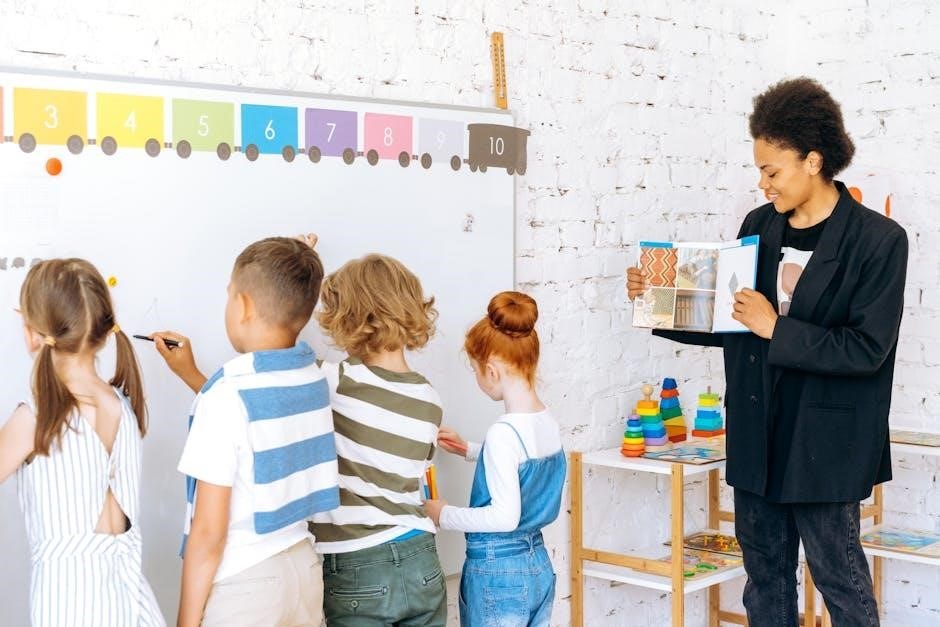
Basic Drawing Techniques
Mastering line art, shading, and perspective is fundamental․
These techniques create depth, dimension, and proportion in your work, forming the foundation for expressive and precise drawings․
3․1 Mastering Line Art and Contours
Line art and contours form the foundation of drawing, defining shapes and structures․
Start with simple lines—horizontal, vertical, diagonal, and curved—to create basic forms․
Contour drawing captures the outline and details of subjects, helping to establish their three-dimensional appearance․
Practice gesture drawing to loosen your strokes and improve line accuracy․
Experiment with varying line weights to add depth and emphasis․
Using reference images can help refine your ability to replicate proportions and details․
Regular practice with exercises like contour and blind contour drawing enhances precision and observation skills․
Remember, patience and consistency are key to mastering these fundamental techniques․
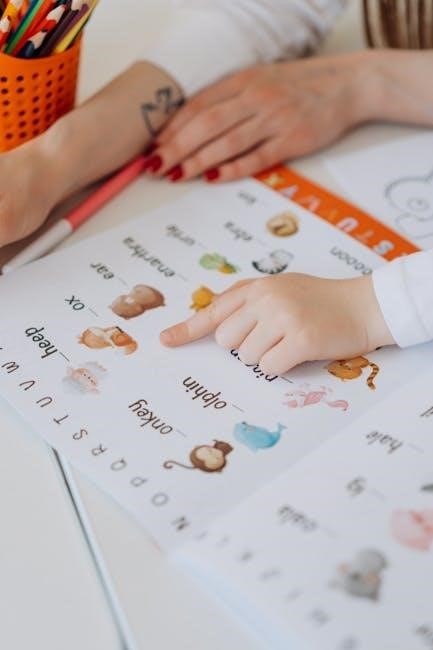
3․2 Shading Techniques for Depth and Dimension
Shading is a fundamental technique for adding depth and dimension to your drawings․
It involves creating areas of light and dark to suggest volume and texture․
Common methods include hatching (parallel lines), cross-hatching (layered lines), and stippling (dotted patterns)․
Start by identifying the light source and applying shading gradually․
Practice smooth transitions from light to dark for realistic results․
Use reference images to study how light interacts with forms․
Experiment with tools like pencils, charcoal, or digital brushes for varying effects․
Shading can transform flat shapes into three-dimensional objects․
Consistent practice will help you master this essential skill, enhancing your ability to convey depth and dimension in your art․
3․3 Understanding Perspective and Proportion
Mastering perspective and proportion is crucial for creating realistic and balanced drawings․
Perspective involves techniques like one-point, two-point, and atmospheric perspective to create depth․
The horizon line and vanishing points help establish a believable space․
Proportion ensures subjects are accurately scaled and placed․
Start by sketching reference lines and grids to guide your measurements․
Practice drawing objects from different angles to understand how perspective affects their appearance․
Use the rule of thirds for dynamic compositions․
Study how light and shadow interact with forms to enhance depth․
Regular practice with these techniques will improve your ability to create convincing and visually appealing drawings․
Remember, patience and observation are key to mastering perspective and proportion․
Drawing Different Subjects
Explore various subjects, from portraits capturing faces and expressions to landscapes depicting scenic views․
Learn to draw animals, focusing on their forms and textures․
Practice diverse techniques to enhance your artistic versatility․

4․1 Drawing Portraits: Faces and Expressions
Drawing portraits involves capturing the essence of a person through facial features and expressions․
Start by sketching the overall proportions of the face, ensuring symmetry and balance․
Pay attention to the placement of eyes, nose, and mouth, as these define the subject’s identity․
Practice drawing various expressions to convey emotions effectively․
Use shading techniques to add depth and dimension to facial features․
Resources like “How to Draw a Character” and step-by-step guides provide valuable tips for mastering portraits․
Experiment with different tools, such as pencils or digital software, to achieve desired effects․
Regular practice will help refine your skills in capturing likenesses and emotions․
Portraits are a great way to challenge your drawing abilities while creating meaningful art․
4․2 Capturing Landscapes and Scenery
Capturing landscapes and scenery involves translating the beauty of nature onto paper․
Start by sketching the horizon line and basic elements like skies, mountains, and trees․
Use perspective to create depth, ensuring objects appear smaller as they recede․
Experiment with shading to capture light and shadow, adding dimension to your scene․
Practice drawing water, clouds, and textures to enhance realism․
Resources like “How to Draw London Landmarks” offer step-by-step guidance for intricate details․
Don’t forget to experiment with tools—pencils, ink, or digital software—to achieve desired effects․
Study the work of other artists and observe nature to refine your techniques․
Remember, practice is key to mastering the art of drawing landscapes and scenery․
4․3 Drawing Animals: Forms and Textures
Drawing animals requires a deep understanding of their forms and textures․
Start by sketching the basic shape and proportions of the animal, then refine details like fur, scales, or feathers․
Use shading techniques to capture textures—soft fur, rough hide, or smooth feathers․
Observe how light interacts with different surfaces to add depth and realism․
Practice drawing animal expressions and movements to convey personality and life;
Resources like “How to Draw Cartoon Characters for Creative Kids” offer step-by-step guides for various species․
Experiment with tools like pencils, ink, or digital software to achieve desired effects;
Study anatomy and observe animals in motion to improve accuracy․
Remember, patience and practice are essential for mastering animal drawing․

Advanced Drawing Techniques
Explore color theory, composition, and perspective for dynamic artwork․
Master rendering textures, patterns, and complex forms with precision․
Enhance your skills with digital tools and advanced shading techniques․
Learn to create depth, harmony, and emotion in your drawings․
5․1 Exploring Color Theory and Harmony
Color theory is the foundation for understanding how colors interact and create harmony․
It involves studying primary and secondary colors, the color wheel, and principles like complementary and analogous colors․
Learning color harmony helps artists evoke emotions and create visually appealing compositions․
Books like “The Complete Book of Drawing” offer insights into color theory, while digital tools provide practical applications․
Experimenting with color mixing and contrast enhances depth and dimension in artwork․
Mastering color theory allows artists to convey mood and balance effectively․
Whether traditional or digital, understanding color is essential for creating impactful drawings․
Practice exercises, like color wheels and swatches, refine your skills․
Color theory is a powerful tool for transforming sketches into vibrant, engaging pieces․
5․2 Composition and Layout Strategies
Composition and layout are crucial for creating balanced and visually appealing drawings․
Understanding principles like balance, contrast, and alignment helps guide the viewer’s eye․
Strategies such as the rule of thirds and leading lines enhance storytelling․
Books like “The Complete Book of Drawing” and “How To Draw Drawing And Sketching Objects And Environments From Your Imagination” offer practical tips․
Experimenting with different layouts allows artists to express ideas effectively․
Planning your composition before sketching ensures a cohesive final piece․
These techniques apply to both traditional and digital art․
Mastering composition elevates your work from simple sketches to engaging, professional-level art․
Practice and study of masterpieces refine your skills․
Composition is the backbone of creating impactful and harmonious drawings․
5․3 Rendering Texture and Patterns
Rendering texture and patterns adds depth and realism to your drawings․
Techniques like hatching, cross-hatching, and stippling create detailed textures․
Contour lines and shading can mimic fabrics, wood, or skin․
Patterns, whether geometric or organic, bring visual interest․
Books like “The Complete Book of Drawing” offer step-by-step guides․
Observing real textures helps in accurately capturing their essence․
Practice drawing fabrics, fur, and other textures to refine your skills․
Mastering texture enhances your ability to depict realistic and engaging subjects․
Combining texture with composition creates dynamic, lifelike artwork․
Consistent practice is key to mastering texture and pattern rendering․
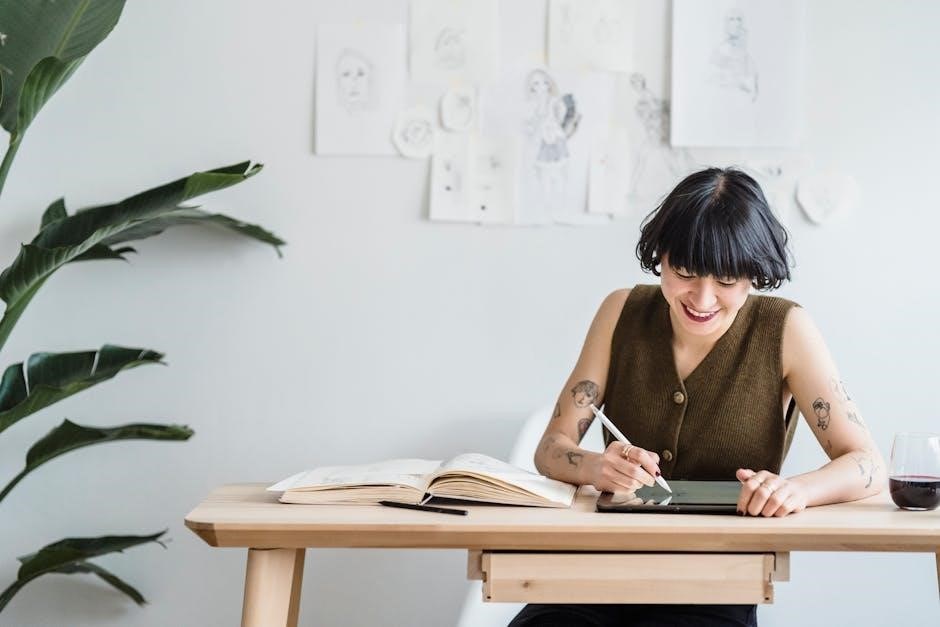
Digital Drawing Tools and Software
Digital drawing tools like Procreate, Adobe Photoshop, and Krita revolutionize art creation․
Software offers brushes, layers, and effects for versatile designs․
Matplotlib and Pyppeteer enable rendering graphs and diagrams․
These tools enhance creativity and precision for artists of all levels․
6․1 Getting Started with Digital Drawing
Transitioning to digital drawing offers exciting possibilities for creativity․ Start by installing software like Procreate, Krita, or Adobe Photoshop․
Familiarize yourself with the interface, exploring brushes, layers, and tools․
Begin with simple exercises, such as drawing lines and shapes, to build comfort․
Practice basic techniques like shading and color blending․
Utilize tutorials from resources like “How to Draw With a Ballpoint Pen” for guidance․
Experiment with digital canvases and undo features to refine your work․
Regular practice helps master digital tools and enhances your artistic skills․
6․2 Popular Software for Digital Art
Several software options cater to digital artists, offering versatile tools for creative expression․
Procreate is a favorite among iPad users, known for its intuitive interface and powerful brush engines․
Krita is a free, open-source program praised for its customizable brushes and suitability for both beginners and professionals․
Adobe Photoshop remains an industry standard, offering advanced features for detailed work and editing․
Clip Studio Paint is popular for comic and manga artists, with tones and vector tools․
Blender and SketchUp are ideal for 3D modeling and architectural drawings․
Each software has unique strengths, so choosing one depends on your artistic goals and preferred medium․
Exploring these options can help you find the perfect fit for your digital drawing journey․
6․3 Tips for Effective Digital Sketching
Mastering digital sketching involves a combination of technique and practice․
Start by sketching simple shapes to warm up and build confidence․
Use layers to separate elements, allowing for easy adjustments without ruining your work․
Experiment with different brushes to achieve unique textures and effects․
Reference images can guide proportions and details, ensuring accuracy․
Practice regularly, even for short sessions, to improve hand-eye coordination․
Don’t be afraid to erase and redraw—mistakes are part of the learning process․
Save frequently to avoid losing progress and experiment with undo/redo tools․
Study the work of other digital artists for inspiration and new techniques․
Finally, take breaks to refresh your eyes and maintain focus during long sessions․
Consistent practice and patience will lead to significant improvement over time․
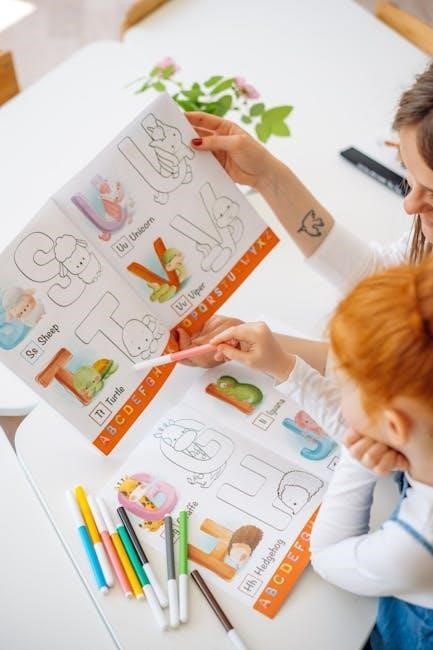
Practice Exercises and Projects
Daily sketching exercises help refine skills and build confidence․
Step-by-step projects guide learners from basic to advanced techniques․
Tracking progress in a sketchbook motivates improvement and showcases growth․

7․1 Daily Sketching Exercises for Improvement
Daily sketching is a cornerstone of improvement in drawing․
Start with simple exercises like drawing basic shapes and lines to build confidence․
Progress to more complex subjects, such as still-life compositions or gesture drawings․
Set aside 15-20 minutes each day to practice consistently․
Experiment with different techniques, like contour drawing or shading, to refine your skills․
Track your progress by maintaining a sketchbook, which will motivate you to improve․
Use resources like “The Complete Book of Drawing” for guided exercises․
Challenge yourself with prompts or tutorials to explore new styles․
Remember, consistent practice is key to mastering drawing techniques and fostering creativity․
7․2 Step-by-Step Drawing Projects
Step-by-step drawing projects are an excellent way to refine your skills․
Begin with simple subjects, such as basic shapes or household objects, and gradually progress to more complex compositions․
Use guides like “How to Draw a Book Tutorial” to create detailed, structured artwork․
Practice drawing castles, landscapes, or portraits by following sequential instructions․
Engage in projects that focus on specific techniques, such as shading or perspective․
For example, start with a simple doodle and evolve it into a detailed illustration․
Explore themed projects, like drawing London landmarks or cartoon characters, to keep your practice engaging․
Structured step-by-step guides help build confidence and mastery․
Regularly challenging yourself with new projects ensures steady improvement and creative growth․
7․3 Overcoming Common Drawing Challenges
Drawing can present challenges, such as mastering proportions, achieving proper perspective, or capturing textures․
One common issue is difficulty in drawing what you see versus what you know․
Practice observational drawing to overcome this․
Another challenge is shading evenly and creating depth, which can be addressed by studying light and shadow techniques․
Some struggle with maintaining motivation, but setting achievable goals and celebrating progress helps․
Using resources like “The Foolproof Method” or “How To Draw Cartoon Characters” provides guidance․
Additionally, breaking subjects into basic shapes simplifies the process․
Regular practice and reviewing tutorials can help refine skills․
Embrace mistakes as part of the learning journey and stay consistent to improve․

Additional Resources and Further Learning
Explore books like “The Complete Book of Drawing” and “How to Draw Cartoon Characters” for guided instruction․
Online communities such as r/learntodraw offer support and inspiration․
Utilize tutorials and step-by-step guides to refine your skills and stay motivated․
8․1 Recommended Drawing Books and Tutorials
Discover essential drawing resources like “The Complete Book of Drawing” by Barrington Barber, offering insights into object drawing and composition․
For beginners, “How to Draw Cartoon Characters For Creative Kids” by David Hailwood provides fun, step-by-step guides․
“How to Draw: Drawing and Sketching Objects and Environments From Your Imagination” by Scott Robertson is ideal for those aiming to create intricate scenes․
Classic resources like “What to Draw and How to Draw it” by E․G․ Lutz remain timeless for foundational skills․
Online tutorials and PDF guides, such as those found on platforms like r/learntodraw, offer practical exercises and inspiration․
These books and tutorials cater to all skill levels, ensuring a comprehensive learning experience․
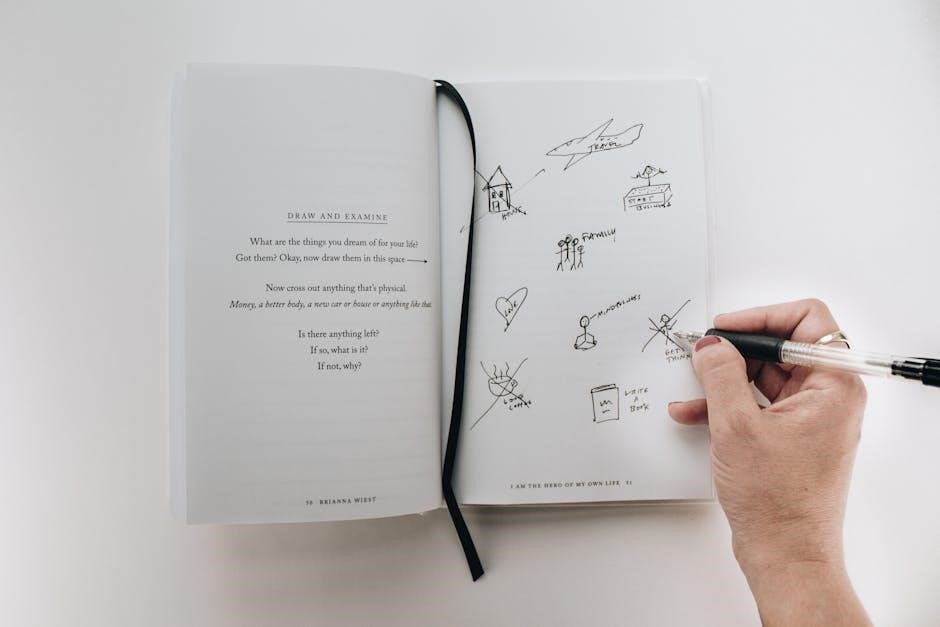
8․2 Online Communities and Forums
Engaging with online communities and forums can significantly enhance your drawing journey․
Platforms like r/learntodraw offer invaluable resources, feedback, and inspiration for artists of all levels․
These communities often host challenges and share tutorials, fostering growth and motivation․
Additionally, websites like the Internet Archive provide access to historical drawing books and resources․
Joining forums allows you to connect with fellow artists, learn from their experiences, and gain insights into new techniques․
These spaces are also great for discovering unique drawing prompts and staying updated on trends in the art world․
8․3 Conclusion and Encouragement to Keep Drawing
Drawing is a journey of growth and creativity that requires patience and persistence․
With the wealth of resources available, from books like The Complete Book of Drawing to online communities, you have everything you need to excel․
Remember, every sketch, no matter how simple, is a step toward mastery․
Embrace challenges as opportunities to learn and improve․
Stay inspired by exploring different techniques and subjects, and don’t hesitate to share your work with others for feedback․
Keep drawing daily, even if it’s just for a few minutes, as consistency is key to progress․
Believe in your potential and enjoy the process of creating․
With dedication, you’ll see your skills evolve, and your passion for drawing will continue to flourish․